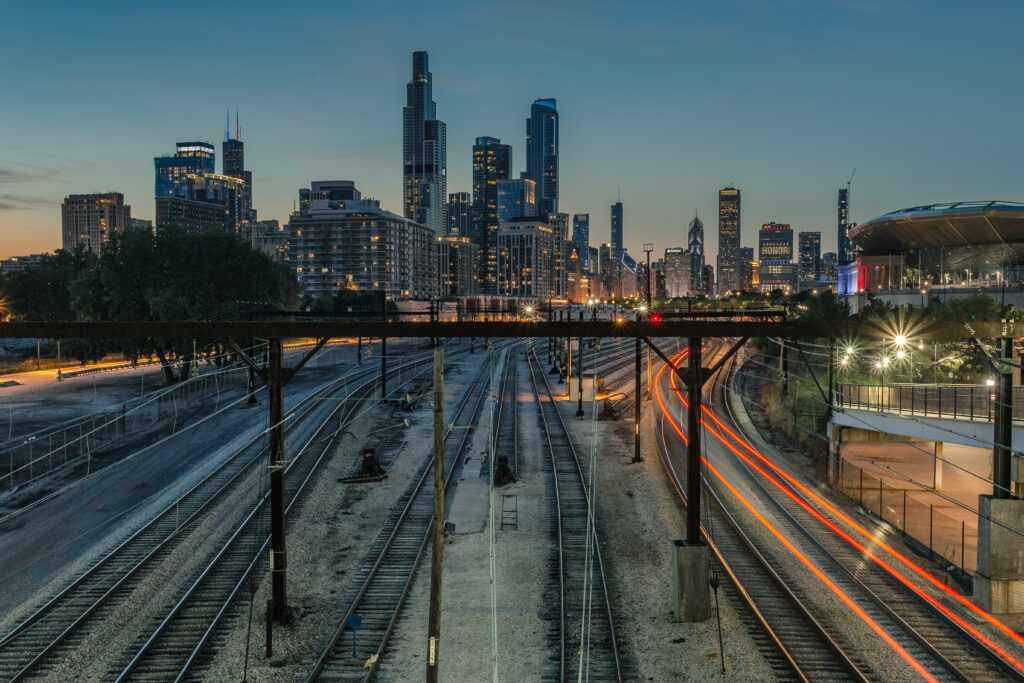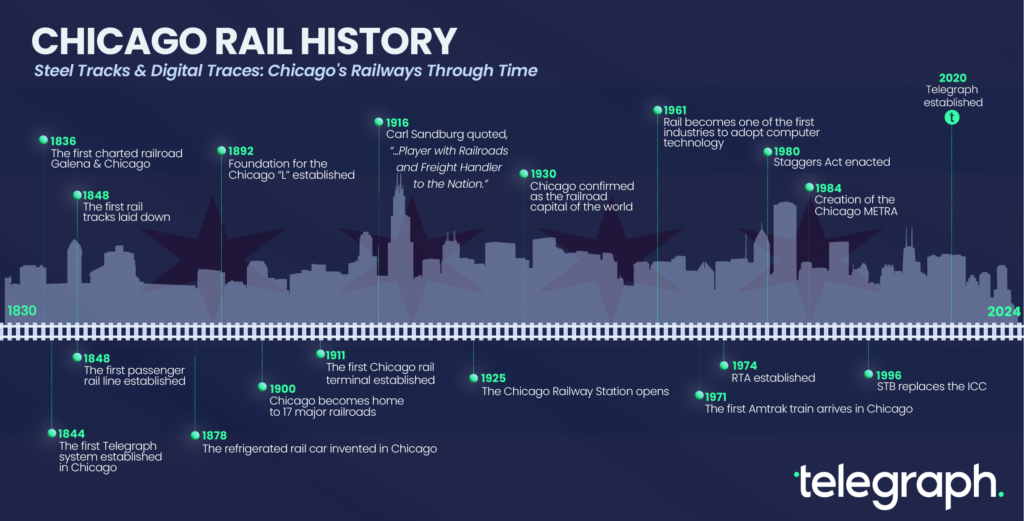
All roads lead to Chicago. While it may seem like we have an inherent bias, being a Chicago-based company ourselves, that simple statement is a common refrain in the rail industry. Maybe it should actually be “all railroads lead to Chicago” because, the fact is: more railroads serve Chicago than any other city in North America. According to the Illinois Department of Transportation, more than 40 railroads provide service from Illinois, with Chicago being the largest US rail gateway. Climb aboard (preferably with a tin of your favorite cheese and caramel popcorn), as we explore the illustrious history of railroading in the Windy City.
Location, location, location
As every good Chicagoan knows, in his early 20th century celebration of the Second City, poet Carl Sandburg called it, a “player with railroads and freight handler to the nation.”

Mr. Sandburg paints a vivid picture with his words of a city deeply intertwined with the nation’s freight rail industry. It’s no surprise, really, when the very first, albeit small, railroad in America was built in 1827, and it was less than a decade later, in 1838, that the Galena & Chicago Union became the first railroad to be chartered in Chicago. By 1856, Chicago was already the greatest railroad center in the world. For the last 150 years, it has remained the nation’s busiest rail hub.
From the onset, Chicago has played a pivotal role in North American freight rail. As it currently stands, all six Class I railroads have operations in Chicago, as well as eight Chicago-based shortlines and six commuter rail lines. Freight rail access to and from Chicago and the rest of North America is unparalleled, with Chicago handling more than 3 million freight cars annually. Approximately one in every four carloads and intermodal containers either originate, terminate, or pass through the Chicago area.

So, why did Chicago become a railroading Mecca? Simply put: location, location, location. Chicago is the most centralized major city in the US. It is strategically located – close to farmlands, adjacent to Lake Michigan, and with waterways that feed into the Mississippi River. It is a natural meeting point for West and East, which is why it is the interchange point for the western railroads and eastern railroads. You can ship something by rail all the way from Los Angeles to New York…as long as it changes railroads in Chicago.
Many folks may not even realize that our illustrious NBA team’s name derives from railroading lore. The Chicago Bulls’ name comes from the Chicago Union Stockyards, which was the meatpacking district of Chicago for over a century, and the center of American meatpacking. By the beginning of the 20th century, the Stockyards provided 82% of the meat consumed in the States. What does meatpacking have to do with railroading you might ask? Well, the Stockyards were operated by a group of nine railroad companies, of course!
Hear that train a-comin’, hear that whistle blowin’
It would be remiss to only talk about freight rail as it relates to Chicago, as the city is second only to New York when it comes to the number of commuter rail passengers. Amtrak, Metra, and the infamous L all serve rail passengers in and around the Chicagoland area. In the heyday of passenger rail travel, Chicago was its bustling capital. Up until the 1960s, Chicago had six major passenger rail stations, offering coast-to-coast, as well as inter-city service. Today, suburbanites regularly use Metra trains to commute into the city, while city dwellers can use the L to zip about town. Amtrak runs from Chicago to a number of destinations – the California Zephyr will take you to San Francisco, the Texas Eagle to Dallas and San Antonio, the Southwest Chief to Flagstaff, Albuquerque, and Los Angeles, and the Capital Limited to Washington DC, to name a few. If you want to experience the grandeur of bygone rail travel, go soak up the Great Hall in Union Station while waiting for your next departure.

A piece of history
Over 185 years after that first railroad charter in Chicago, the city remains a bustling railroading town. Head out to any of the suburbs, and, odds are, you will get stopped at a train crossing. Listen closely above the ever-present buzz of the city, and you will hear the bells of a Metra train, or the rumble of the tracks as an L train passes by. As a freight rail tech company, not only do we love being in the center of it all, we are also excited to add our story to the book of Chicago Rail History.